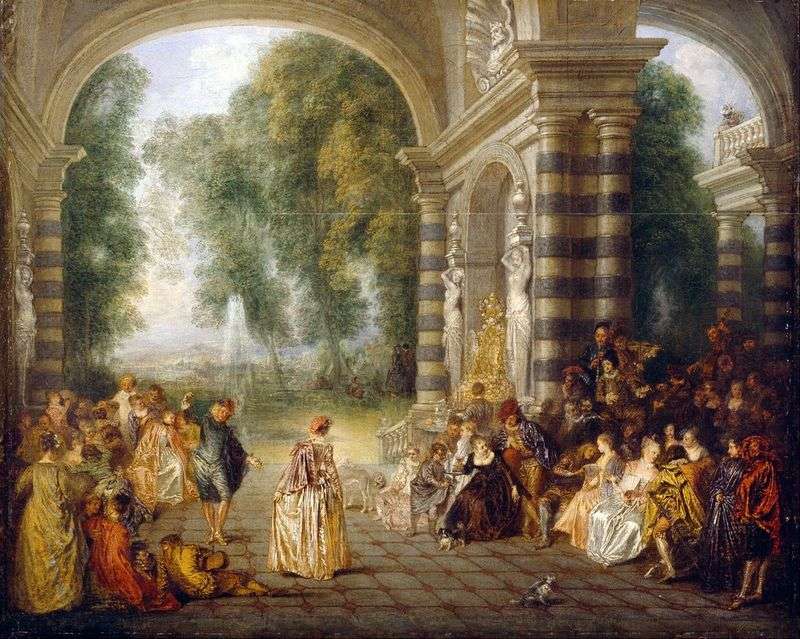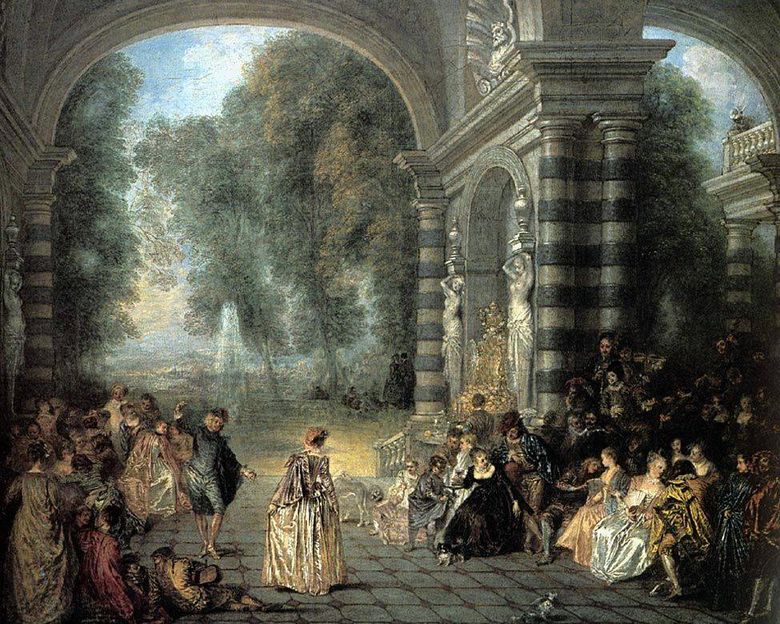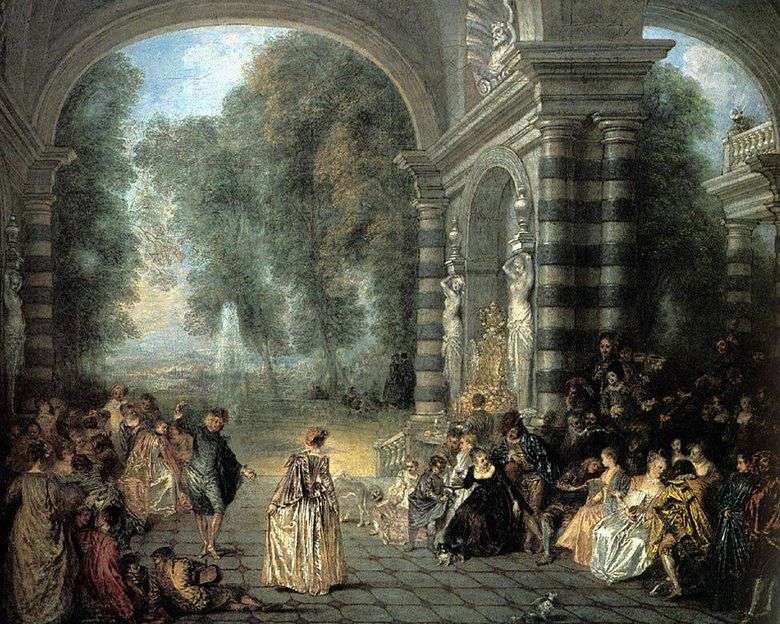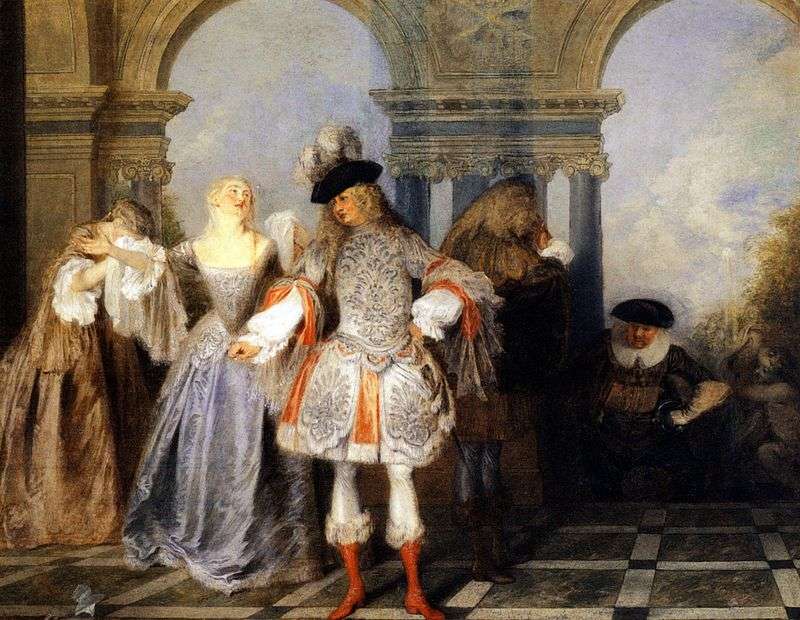
Painting of the French painter Antoine Watteau “The Joy of the Ball.” The size of the picture is 53 x 66 cm, canvas, oil. Ball – now means a collection of a large society of people of both sexes for dancing. Balls differ from other dance gatherings with a certain brilliance, a stricter etiquette and a predetermined order.
The beginning of the device of balls goes back to the festivities at the French and Burgundy courts. The first ball, which is known in history, was given in 1385 in Amiens, on the occasion of the marriage of Charles VI with Isabella of Bavaria. But it is doubtful whether the princes themselves and the invited higher nobility participated in the dances then. In the fifteenth and sixteenth centuries, great dancing entertainments at courts and noble castles occurred very rarely, and only with Maria de ‘Medici, who also carried masquerades to France for the first time, and even more so with the gallant King Henry IV, the balls became widespread.
The true form of the balls are preserved from the time of Louis XIV, when they took root in all German residences. Since then, balls form an essential part of most court festivals. For the balls developed little by little, originally in France, a certain ceremonial, which, despite its shyness, with small changes was adopted everywhere, and only in recent times somewhat simplified.
Since 1715 in Paris, balls have been arranged in the building of the opera house, and at the same time given the opportunity for middle-class people to take part in these solely dedicated to dancing and amusement for a certain fee. Since then, balls have become a public entertainment for all classes. As in all areas of luxury and fashion, Paris from the XVIII century to the XX century always set the tone in the arrangement of balls and the choice of ballroom toilets.
 Ball Joy – Jean Antoine Watteau
Ball Joy – Jean Antoine Watteau Joy Ball – Jean Antoine Watteau
Joy Ball – Jean Antoine Watteau Actors of the French comedy (Return from the ball, Masquerade) by Jean Antoine Watteau
Actors of the French comedy (Return from the ball, Masquerade) by Jean Antoine Watteau Dance by Jean Antoine Watteau
Dance by Jean Antoine Watteau Conclusion of the marriage contract by Jean Antoine Watteau
Conclusion of the marriage contract by Jean Antoine Watteau Musical party in the summer theater by Jean Antoine Watteau
Musical party in the summer theater by Jean Antoine Watteau French Comedy by Jean Antoine Watteau
French Comedy by Jean Antoine Watteau The scene of the French comedy by Jean Antoine Watteau
The scene of the French comedy by Jean Antoine Watteau